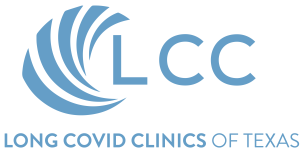- 981 State Hwy 121 Allen, TX 75013
COVID-19 and other respiratory disorders damage your breathing system, and as a result, your ability to breathe also gets badly affected. Breathlessness is a pretty common symptom following COVID-19 recovery.
A sense of discomfort or trouble in breathing is referred to as breathlessness. Your daily activities and lifestyle could be affected, and it may leave you feeling worried or anxious.
You could feel “winded” when you’re struggling to breathe, making it challenging to take a deep breath. It may get impossible for you to breathe deeply or quickly.
You can feel like you are short of oxygen. It could be challenging to breathe in and out. Occasionally, you could feel the need to take a breath without having completely exhaled.
The following symptoms might accompany shortness of breath after COVID:
Breathlessness can happen when doing everyday activities like:
Some methods for controlling shortness of breath after COVID when doing physical activity include:
Talk to our multidisciplinary medical team representative when you’re rehabilitating through COVID and feel out of breath during physical and mental activities.
WHEN SHOULD YOU VISIT THE EMERGENCY DEPARTMENT?
Breathing difficulties aren’t the same as being out of breath. You might experience any of the following when breathing properly is challenging:
Respiratory problems are urgent and must be treated immediately by a doctor.
A typical COVID-19 symptom is chest discomfort. This is possible for chest pain to emerge weeks or even months after your COVID-19 infection or to last longer than the initial illness. Palpitations, lightheadedness, chest pain, and shortness of breath after COVID are a few typical Post chest-related issues that can either be brought on by cardiac problems or might also be caused by COVID-19.
It is important to remember that even if you have had COVID-19 and are currently having chest pain, the virus may not be the cause of it. You must seek medical assistance if you notice new chest pain because these symptoms could indicate a more severe problem, such as a lung or heart issue.
Although there is still much to learn about chest discomfort after COVID-19, it appears that there are many potential causes. Even though chest pain might not be severe, it is necessary to get immediate assistance if you have any of the following cardiac attack symptoms:
The oxygen may enter the bloodstream because the infection induces inflammation that allows the water to clog the air sacs in the lungs. Blood rushing in the body requires the heart to perform faster, which can be risky, particularly for those who already have heart problems.
 Myocarditis (Swelling Of the Heart)
Myocarditis (Swelling Of the Heart)Coronavirus is one of many viruses, like the flu, that can potentially infect and harm cardiac muscle. The body’s defense system can also damage and injure the cardiac muscle.
Cardiomyopathy is a condition of the cardiac muscle that impairs the heart’s capability to pump blood adequately. A variety of viral diseases can bring it on. The stress caused by a viral infection causes the body to secrete excessive catecholamines that can eventually stop the heart. The stressor will cease once the virus is cured, thus, allowing the heart to heal.
After contracting COVID-19, get medical assistance as soon as possible if you experience palpitations or an increase in the heart rate. Multiple factors, such as dehydration, fever, anxiety or stress, and drugs, can induce a momentary rise in heart rate. A quick or irregular pulse can cause palpitations, a rapid or erratic beating in your chest, chest pain, and lightheadedness or dizziness, especially when you stand up.
The disorder known as Postural Orthostatic Tachycardia Syndrome may present the symptoms of Post-COVID, often referred to as the Long COVID. Although POTS has an impact on your blood circulation, it is still not a heart issue. A neurologic condition called POTS disrupts the area of the nerve network that controls blood circulation and heartbeat. The syndrome may result in faster heartbeats as you get up, which can induce brain fog, weariness, palpitations, drowsiness, and other sensations. Consult with your medical physician if you have these indications.
WHEN SHOULD I CONSIDER GETTING AN EMERGENCY MEDICAL ASSISTANCE:
Once you believe you could be suffering from a cardiac attack, you must call 911 immediately for emergency medical assistance. Symptoms of a cardiac attack encompass:
Following a COVID-19 infection, getting back in form and participating in activities is essential for healing. You might be able to get back to your old activity levels right away, but it could also take a few months to get back to that level and find yourself a “new normal.”
Following sickness and idleness, people lose strength and fitness. Physical activity will help you build stronger muscles, get fitter, and enhance your health and wellness. You can reduce joint pain and stiffness and rebuild muscular strength by engaging in regular physical activity. Sleeping well could be a result of being engaged throughout the day. Regular exercise will eventually assist you in controlling chronic diseases like cardiovascular illness and diabetes. The health advantages increase with doing physical activities daily.
How soon after suffering from COVID-19 can I resume my usual activity level?
While some people can immediately resume their normal activities, others must carefully ramp up their activity over several weeks. After recovering from an illness, you should gradually increase your activity level. if you feel energized after doing it, you’re probably engaging in a safe level of activity. If you feel extremely exhausted after an activity, you’re definitely doing too much and should cut back and move more slowly. There is no one proper approach to increase activity after illness; it is unique to each individual.
It’s common to feel out of breath while engaging in physical activity; this is not dangerous. But if you’re struggling to breathe, talk more slowly until you feel better. Remember to pace your movements so that you don’t become so out of breath that you have to stop immediately.
Start out slowly and gradually increase your degree of activity. Try to engage in brief tasks regularly, give yourself rest in between, and avoid going overboard. The following advice could also be useful:
Limit your sitting time.
Every hour, get up and start marching.
Set manageable tasks for yourself to complete throughout the day.
Aim to walk every day, and pick a time of day when you aren’t too exhausted. Until you feel confident leaving on your own, walk with someone. Try incorporating a regular stroll into your schedule. If you feel the need to pause and rest, don’t be concerned; this is a common aspect of healing and regaining strength.
Begin by merely moving for five minutes without pausing (or less if you feel breathless and tired). Build this up one or two minutes at a time. Aim for two daily ten-minute walks once you can go ten minutes without stopping. Aim for two 15-minute walks once you’ve completed three ten-minute walks. Move up to a 30-minute walk gradually. You can start increasing your speed if you can walk continuously for 30 minutes.
